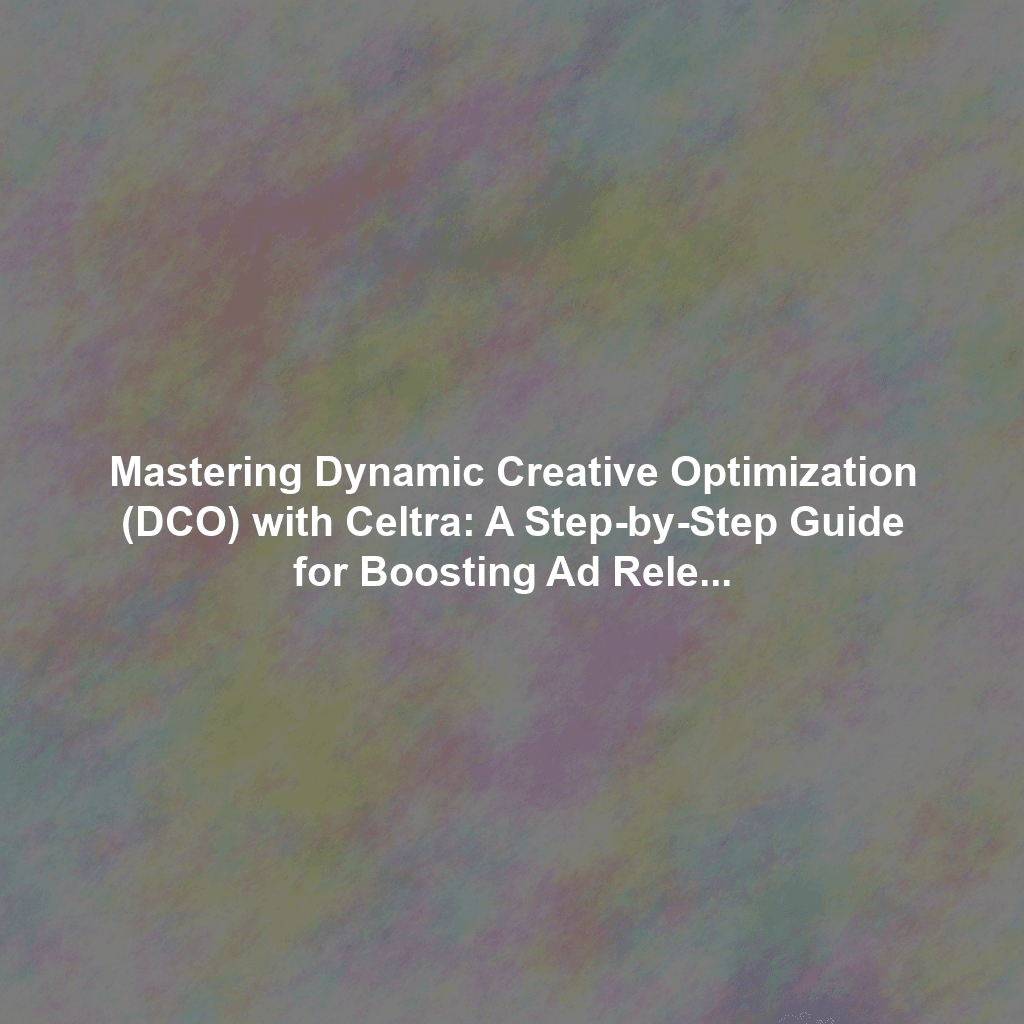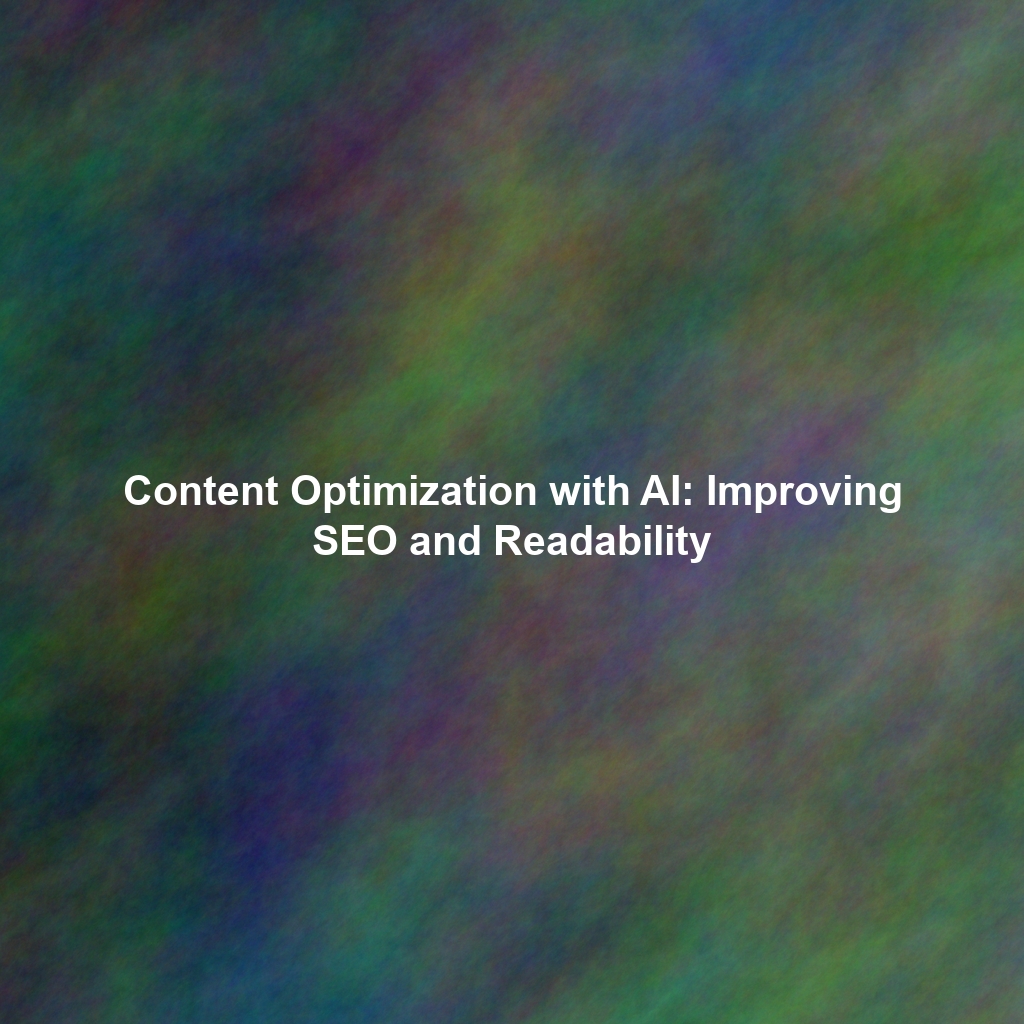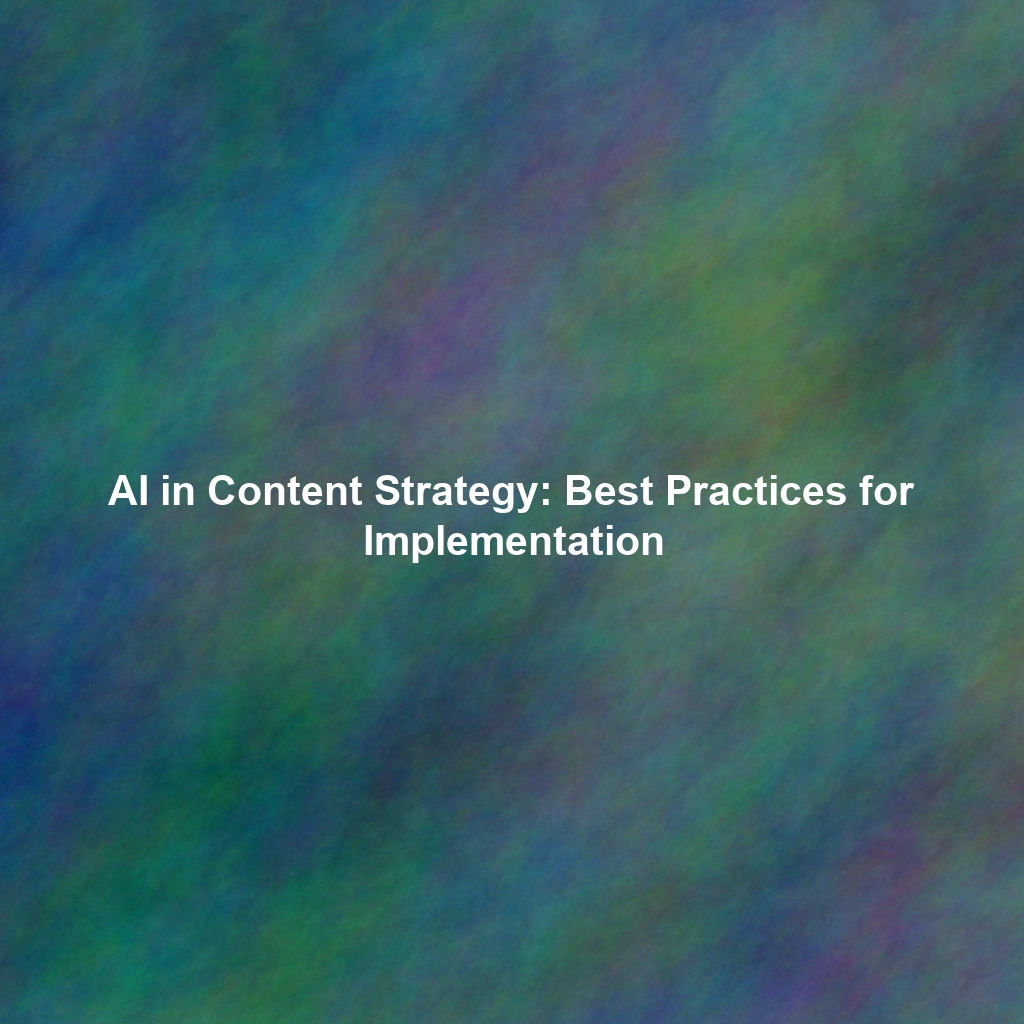Think of DCO like this: instead of showing everyone the exact same ad, you’re automatically tweaking different parts of it – the pictures, the headlines, the body copy, even the call to action – based on who’s seeing it, where they are, what time it is, and what they’ve done before. It’s about using vast amounts of data to make your ads feel less like an interruption and more like a helpful, timely, and genuinely relevant piece of information that they actually care about. This shift from generic messaging to hyper-personalized engagement is a strategic imperative for maximizing your return on ad spend (ROAS) and building stronger brand connections.
What is Dynamic Creative Optimization (DCO)? Beyond Basic Personalization
Dynamic Creative Optimization (DCO) is an advanced programmatic advertising technique that enables advertisers to automatically generate and serve personalized ad variations in real-time. Unlike traditional A/B testing where you manually create a few versions and test them, DCO leverages data and machine learning to dynamically assemble countless ad variations from a library of creative assets. These variations are then delivered to individual users based on specific data signals, ensuring maximum relevance.
The core components of DCO include:
- Creative Assets: A library of individual elements (images, videos, headlines, body copy, calls-to-action, product feeds).
- Data Feeds: Information about the user (demographics, location, past behavior, interests), product information (price, availability), or contextual signals (website content, time of day).
- Decisioning Engine: The rules or machine learning algorithms that determine which creative elements to combine for a specific user and context.
- Real-time Delivery: The ability to assemble and serve the personalized ad in milliseconds within the ad exchange.
This goes far beyond simple personalization. DCO allows for:
- Hyper-Relevance: Showing a user a product they viewed, in their local currency, with a headline tailored to their specific interest.
- Scalability: Generating thousands or millions of unique ad variations without manual creative production.
- Real-time Optimization: Continuously learning which combinations perform best and automatically adjusting delivery.
While E-E-A-T primarily applies to content, the principles of Experience, Expertise, Authoritativeness, and Trustworthiness extend to your advertising. DCO enhances E-E-A-T by:
- Experience: Delivering highly relevant ads that feel intuitive and helpful, improving the user’s ad experience.
- Expertise: Showcasing specific products or solutions that directly address a user’s demonstrated need, implying deep knowledge of their preferences.
- Trustworthiness: Personalized ads that are not “creepy” but genuinely helpful build trust by demonstrating an understanding of the user’s journey, rather than generic intrusion.
Why Celtra is Essential for DCO: Your Creative Automation Powerhouse
While the concept of DCO is powerful, implementing it effectively requires a robust platform that can handle the complexities of creative management, data integration, and real-time optimization. Celtra has positioned itself as a market leader in this space, offering a comprehensive suite of tools specifically designed for DCO at scale. Here’s why Celtra stands out as a serious contender:
- Unified Creative Management: Celtra provides a central hub to manage all your ad bits and pieces – images, videos, fonts, brand guidelines, headlines, calls to action, product feeds, and more. No more hunting through endless folders or dealing with version control nightmares. This streamlines creative workflows and ensures brand consistency across all dynamic variations.
- Seamless Data Integration: DCO is useless without data. Celtra is built to integrate seamlessly with your critical data sources. It hooks up to your Customer Relationship Management (CRM) systems (like Salesforce), your Data Management Platforms (DMP) for audience segmentation, your Customer Data Platforms (CDP) for unified customer profiles, and your website analytics (like Google Analytics). This means Celtra can actually use the rich information you have about your customers and their behaviors to fuel personalized ad delivery.
- Precision Targeting and Segmentation: Celtra empowers you to get really specific about who sees what. You can define granular audience segments based on a multitude of data points – everything from their age, gender, and location to their past purchase history, website browsing behavior, and declared interests. This allows for hyper-targeted ad delivery, ensuring your message resonates with the individual viewer.
- Real-time Optimization and Machine Learning: It doesn’t just set it and forget it. Celtra’s platform incorporates machine learning algorithms that continuously monitor how your dynamic ads are performing in real-time. It automatically identifies which creative elements, combinations, and messages are driving the best results for specific audience segments and makes adjustments on the fly to improve performance, maximizing your ROAS without constant manual intervention.
- Scalability Without Resource Strain: If you’re looking to run a lot of personalized campaigns across multiple channels and geographies, Celtra has the tools and infrastructure to handle it without needing to hire an army of designers and ad ops specialists. Its automation capabilities allow brands to scale their DCO efforts efficiently, creating thousands or even millions of unique ad variations from a single master template.
- Brand Safety and Governance: Managing dynamic creative at scale can introduce brand safety risks. Celtra provides features to ensure that all dynamically assembled ads adhere to brand guidelines, legal requirements, and suitability standards, maintaining control over your brand’s image.
Getting Started with DCO in Celtra: A No-Nonsense Strategic Playbook
Okay, so how do you actually do this? Implementing DCO with Celtra is a systematic process that requires careful planning and a data-driven mindset. Here’s a breakdown of the key steps:
1. Define Your Goals and Understand Your Audience: The Strategic Foundation
Before you even log into any platform, get crystal clear on your campaign goals. Want more sales? More leads? Higher average order value? More app downloads? Got it. Now, who are you trying to reach? Dig deep into who these people are, creating detailed audience personas. The more granular your understanding, the more effective your DCO will be:
- Demographics: Age, gender, where they live, income level, family status.
- Psychographics: Hobbies, interests, values, lifestyle, what motivates them.
- Behavioral Data: Their history with your brand (past purchases, website visits, abandoned carts, app usage), their online browsing habits, content consumption, and search queries.
- Contextual Signals: What type of content are they currently viewing? What time of day is it? What’s the weather like in their location?
Document this stuff meticulously. It’s the bedrock of your DCO strategy, informing every subsequent step, from creative asset creation to rule setting. This foundational understanding ensures your personalization is relevant, not creepy.
2. Get Your Data Connected and Flowing: The Fuel for Personalization
DCO is useless without robust, accurate, and real-time data. This is arguably the most critical technical step. Make sure Celtra is seamlessly plugged into all your relevant data sources. This is how Celtra gets the fuel it needs to personalize effectively:
- CRM (Customer Relationship Management): For customer lists, purchase history, loyalty status.
- DMP (Data Management Platform) / CDP (Customer Data Platform): For unified customer profiles, audience segments, and third-party data.
- Website Analytics (e.g., Google Analytics): For on-site behavior, page views, session duration, conversion events.
- Product Feeds: For real-time product information, pricing, availability, and images (crucial for e-commerce DCO).
- Offline Data: Integrate loyalty program data, in-store purchase history, or call center interactions if relevant.
Ensure data privacy compliance (e.g., GDPR, CCPA) throughout this integration process. The cleaner and more comprehensive your data, the more powerful and precise your DCO campaigns will be. Celtra provides various APIs and pre-built connectors to facilitate this integration.
3. Build Your Ad Ingredients (Creative Assets): The Dynamic Library
Think of this as stocking your kitchen with a diverse array of high-quality ingredients. You need a variety of creative assets that can be dynamically combined to form personalized ads. This moves beyond creating a few static banners to building a modular creative system:
- Images/Videos: Different product shots, lifestyle images, user-generated content, location-specific visuals, seasonal imagery.
- Headlines: Multiple variations focusing on different benefits, pain points, questions, or creating a sense of urgency.
- Body Copy: Varied descriptions that highlight different features, use cases, or address specific audience segments.
- Calls to Action (CTAs): “Buy Now,” “Find Out More,” “Get a Free Quote,” “Download Here,” “Shop Local Store,” “Book a Demo.”
- Brand Elements: Logos, color palettes, fonts, legal disclaimers – all consistent with your brand guidelines.
- Product Information: Real-time pricing, availability, ratings, reviews pulled from your product feed.
Use Celtra’s intuitive creative authoring tools to design these individual elements and define how they fit into your master ad templates. The key is to have enough variety to enable meaningful personalization without overwhelming your creative team. Keep your brand consistent visually across all variations.
4. Set the Rules of the Game (Decisioning Logic): The Personalization Engine
This is where you tell Celtra how to mix and match your creative ingredients based on your audience data and campaign objectives. This involves defining the logic that drives the personalization. Celtra’s interface should let you set these rules up visually, making complex logic manageable:
- Rule 1 (Retargeting): If a user viewed Product X but didn’t purchase, show them an ad for Product X with a headline highlighting a limited-time discount and a CTA “Complete Your Purchase.”
- Rule 2 (Geo-Targeting/Local): If a user is in London, show them an ad with a London-specific image (e.g., Big Ben), a headline mentioning “London’s Best [Product/Service],” and a CTA “Find Nearest Store.”
- Rule 3 (Weather-Based): If the local weather forecast is sunny, show an ad for sunglasses; if rainy, show an ad for umbrellas.
- Rule 4 (Product Affinity): If a user bought Product A, show them an ad for Product B (a related or complementary item) with a headline like “You Might Also Like…”
- Rule 5 (Time-Based): Show breakfast items in the morning, lunch specials at midday, and dinner options in the evening.
The more sophisticated your data, the more complex and precise your rules can become, allowing for truly dynamic and contextually relevant ad experiences.
5. Test, Measure, and Tweak (Constantly): The Optimization Loop
Once your DCO campaigns are live, the work isn’t over—it’s just beginning. Launch your campaigns and keep a close, data-driven eye on how they’re performing. Celtra should provide you with robust analytics and reporting dashboards to track key metrics:
- Click-Through Rate (CTR): Are people actually clicking on your personalized ads?
- Conversion Rate: Are those clicks turning into the desired action (sales, leads, downloads)?
- Cost Per Acquisition (CPA): How much are you spending to acquire a new customer or lead through DCO?
- Return on Ad Spend (ROAS): Are you making more money than you’re spending on these personalized campaigns?
- Viewability Rate: Are your ads actually being seen by users?
- Engagement Metrics: For video, are users watching to completion? For interactive ads, are they engaging with the elements?
Use this data to figure out what’s working and what’s not. Identify which creative elements, headlines, or calls to action are performing best for specific segments. Try different combinations and refine your rules. Celtra’s platform often includes built-in A/B testing and machine learning-driven optimization features that can automate some of this heavy lifting, continuously improving performance without constant manual intervention. This iterative optimization loop is crucial for maximizing DCO’s potential.
Key Benefits of Implementing DCO with Celtra: Driving Real Business Outcomes
Beyond the technical aspects, the strategic advantages of DCO are compelling for any modern marketer aiming for efficiency and impact:
- Increased Ad Relevance and Engagement: Personalized ads resonate more deeply with users, leading to higher CTRs, lower bounce rates, and improved brand recall.
- Improved Conversion Rates: By showing the right message to the right person at the right time, DCO drives users further down the funnel, resulting in higher conversion rates and better ROI.
- Enhanced Efficiency and Scalability: Automating creative production and optimization saves significant time and resources, allowing teams to scale personalized campaigns without proportionate increases in manual effort.
- Better User Experience: Less generic, more relevant ads contribute to a less intrusive and more positive overall ad experience for consumers, fostering goodwill towards your brand.
- Richer Insights: DCO platforms provide granular data on which creative elements and personalization rules perform best, offering valuable insights that can inform broader marketing and product strategies.
- Reduced Creative Fatigue: By constantly rotating and optimizing creative variations, DCO helps prevent audiences from becoming “fatigued” by seeing the same ad repeatedly.
- Competitive Advantage: Many brands are still using static or minimally personalized ads. Implementing DCO provides a significant competitive edge in capturing audience attention and market share.
Challenges and Considerations for DCO Implementation
While DCO offers immense benefits, it’s not without its complexities. Businesses should be aware of potential challenges before diving in:
- Data Quality and Integration: DCO’s effectiveness hinges entirely on the quality and accessibility of your data. Poor data hygiene or fragmented data sources can severely limit personalization capabilities.
- Creative Asset Management: While Celtra streamlines this, building and managing a comprehensive library of modular creative assets requires initial effort and ongoing attention.
- Complexity of Rule Setting: For highly nuanced personalization, defining and managing complex rule sets can be challenging and requires strategic thinking.
- Initial Setup and Learning Curve: Implementing DCO, especially for the first time, involves a learning curve and requires dedicated resources for setup and integration.
- Privacy Concerns: As DCO relies heavily on user data, ensuring compliance with privacy regulations (GDPR, CCPA, etc.) and maintaining user trust is paramount. Avoid personalization that feels “creepy.”
- Measurement and Attribution: While DCO provides rich data, accurately attributing conversions across highly personalized, multi-touch campaigns can still be complex and requires robust measurement frameworks.
Real-World Example: Travel That Actually Feels Relevant and Inspiring
Imagine a global travel company using Celtra to power its DCO campaigns. Instead of generic “Book Your Next Vacation” ads, their ads become highly personalized and contextually relevant:
- Retargeting Abandoned Carts: If someone searched for flights to Rome but didn’t book, they could then see ads featuring beautiful imagery of Rome’s iconic landmarks (Colosseum, Vatican), with a headline like “Still dreaming of Rome? Flights from [User’s City] starting at [Price].”
- Location-Based Offers: A user in London who frequently searches for “beach holidays” might see an ad for a specific resort in the Canary Islands, highlighting direct flights from London airports and current weather forecasts for the destination.
- Dynamic Pricing and Availability: If a user viewed a specific hotel, the ad could dynamically update to show the real-time price and availability for their exact dates, creating urgency.
- Audience Affinity: For someone identified as an “adventure traveler,” ads might feature images of hiking in the Dolomites with a CTA to explore adventure packages, while a “luxury traveler” might see ads for five-star resorts with spa amenities.
- Past Purchase History: If a customer previously booked a family cruise, future ads could dynamically showcase family-friendly cruise lines or destinations with kids’ activities.
That’s the power of personalization: making the ad less like an interruption and more like a helpful, inspiring suggestion tailored precisely to the individual’s journey and preferences. This level of relevance significantly boosts engagement and conversion rates.
In Conclusion: Stop Being Generic, Start Being Relevant
Dynamic Creative Optimization (DCO) with a robust platform like Celtra isn’t just a fancy buzzword or a fleeting trend; it’s a fundamental shift in how modern advertising is conceived and executed. It’s a strategic imperative for marketers who are serious about cutting through the digital noise and driving real, measurable results. By focusing on hyper-personalization, leveraging data intelligently, and embracing automation, you can move beyond the limitations of generic advertising and start seeing a much better return on your ad spend. It’s about making your ads less like ads and more like helpful, relevant, and engaging information that truly resonates with your audience.
The investment in DCO technology and strategy pays dividends in increased engagement, higher conversion rates, and a stronger, more trusted brand presence. In a world where consumers demand relevance, DCO empowers you to deliver it at scale, ensuring your advertising is not just seen, but felt and acted upon. So, stop being generic; start being relevant, and leverage platforms like Celtra to transform your creative into a powerful, dynamic force for business growth.
 Skip to content
Skip to content

